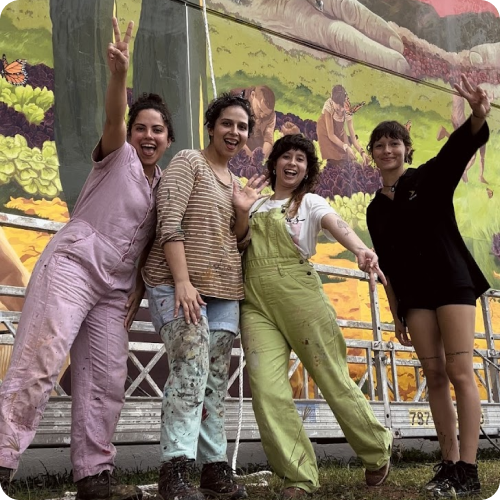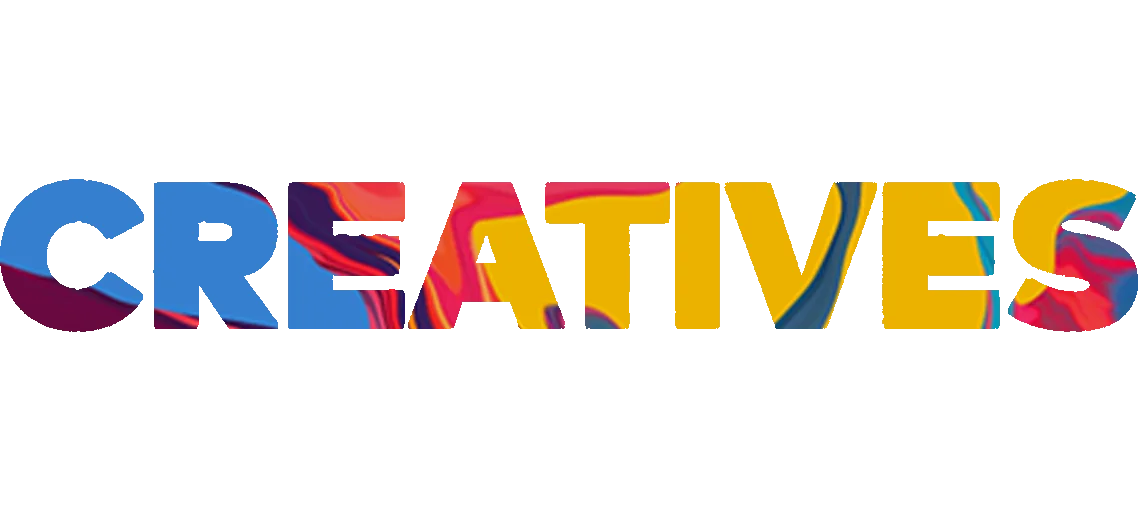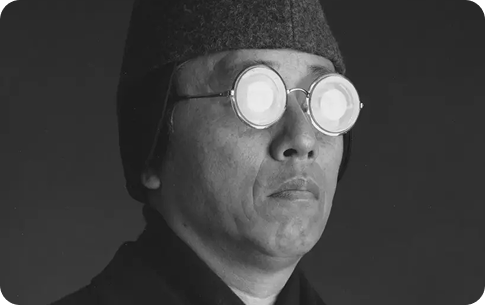
“For me, activism is about actively engaging with — and challenging — societal norms and systems to bring about positive change. It involves speaking out, raising awareness, advocating for justice, and taking action.”
- Onalerona Seane
Collective Moriviví is an all-woman artistic collective in Puerto Rico dedicated to “democratizing art and bringing the narratives of Puerto Rican communities to the public sphere to create spaces in which they are validated.”
The collective began at Central High School of Visual Arts, in Santurce, where co-founders Raysa Raque Rodríguez García and Sharon González Colón studied visual art and attended a painting and drawing workshop together.
“In the last year of high school, we started the collective because we met the coordinator of one of the most famous mural festivals here in Puerto Rico, at a conference,” Rodríguez García explained. “We proposed to him that we participate in the annual festival as representatives of the school. Everyone involved in the process — preparing the painting and the materials, creating the sketch, and also choosing and creating the mural for us — [they] were only women. We didn't plan that, it just happened that way.”
The response to their mural was positive and generated interest in who created it, particularly because at the time, they were young girls in a world where older men traditionally did the kind of work they produced.
She adds: “We discovered the power of muralism as a way to express art. But also [to engage with] social, political, gender topics in our public space through art. We decided that we wanted to keep doing that, but we were just too young. When we went to university we started to see and learn more about political and social issues and our work started to be more political. We then transformed our work to be a community movement. The art came first, but doing art in Puerto Rico has a relation with the political issues, even if you are just painting flowers. The context makes it political.”
“I think doing art in Puerto Rico is a way to resist,” she continued. “Even though your work is not directly related to it, being an artist is not a very acceptable profession or [something] society thinks that is important. Even the government is always, since many years ago, trying to cut arts and culture [spending], because they know that it is important for our society because it helps us to think of other ways and be more conscious of our environment.”
“Art helps us to be more human, to have more sensibility and to be connected with all of these things like nature. “If we don't have arts and we don't have culture, we don't have identity.”
Puerto Rico has numerous challenges such as a poverty rate of over 40%, a debt crisis, a failing power grid, and the devastation of climate disasters such as Hurricane Maria which over the years the collective has felt the need to respond to.
“I can pinpoint that in 2015 we were facing a lot of economic crises and a lot of budget cuts,” said González Colón “We were involved with the protests. We actually began protesting from the arts and community sector, and we got involved in that too. And then in 2016, the PRIOMESA Act was passed in Puerto Rico.”
“And it was a necessity to react to all these things,” González Colón told Global Citizen.
However, using art as a tool for activism has not been without challenges as the pair shared that: “We have never been in a formal museum or a more established gallery space. Actually, we've tried twice to do some work with the museums in Puerto Rico and both failed because the work was too political for them, even though it was part of a very political exhibition.”
The other challenges faced by organizations like the collective is the issue of funding, particularly grant funding which both Rodríguez García and González Colón explained doesn’t take into account the workflow of the type of community-driven work they do and how it may not always conform to funder deadlines and cycles.
In addition to using art as a tool to resist gentrification of poorer communities, the collective sees it as a tool to engage marginalized communities. “I think from our very first participation in an urban arts festival, which at the time were booming, you see artists that just paint a wall and then they leave, some of them are not from here. ” said González Colón.
She continued: “They're international artists or they come from the US. They already have their own ideas and their own style, and we saw how this was being portrayed in a space that belonged to a community. And some of them are really, really fast too, and they do [the artwork] in four days. And just the experience, that we actually got to talk with the people that lived in the house we were painting, and got to talk with the people who saw us working every day, we learned how important it was that the art related to them. And that's what sparked our interest in getting communities involved.”
Now in their 10th year, the collective continues to use public art as a tool for community-making and for organizing around issues that impact vulnerable Puerto Rican communities.
MENTOR: Jacques Nkinzingabo | Visual storyteller and photographer
THEIR WORK

Global Citizen’s Emerging Creatives Program provides a platform for emerging creatives in the Global South that are highlighting the need for open civic space worldwide. Through their art, they call for change, shine a light on social injustices, and advocate for the advancement of the Global Goals.
MEET THE MENTOR
Rakaya Esime Fetuga
POET
South African-born Simphiwe Molefe, uses his photography to show the impacts of energy issues in the country. His collection of images titled, Impilo Iyaqhubeka, translates to mean “life goes on” in isiZulu and looks at how every day members of his community cope with South Africa’s ongoing power crisis.
In 2023, South Africa’s civic space rating was downgraded from “narrowed,” to “obstructed” — the third worst rating a country can have. That’s why Molefe believes creatives like himself have a role to play in highlighting the effects of the failure of basic services such as the power crisis in South Africa.



